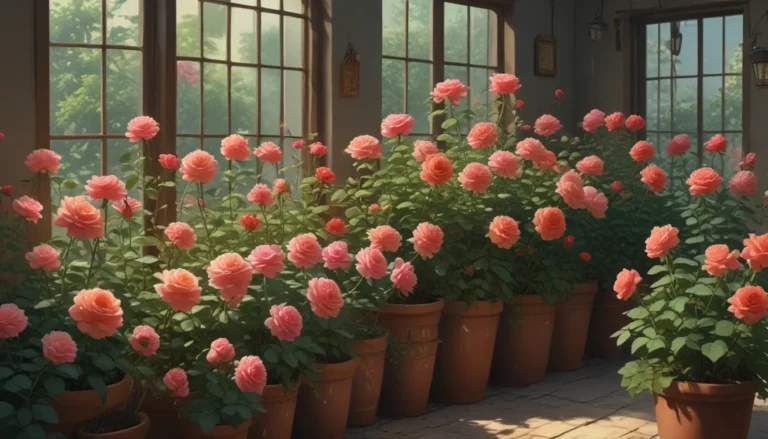Growing and Using Chocolate Mint: A Delicious Addition to Your Herb Garden

Are you a fan of the delightful combination of mint and chocolate? If so, you’re in for a treat with chocolate mint, a plant that not only smells amazing but also adds a unique flavor to a variety of dishes and drinks. In this guide, we’ll cover everything you need to know about growing and using chocolate mint, from cultivation to preservation and culinary ideas.
What You’ll Learn
- Cultivation and History
- Propagation
- How to Grow
- Growing Tips
- Where to Buy
- Managing Pests and Disease
- Harvesting
- Preserving
- Recipes and Cooking Ideas
- Quick Reference Growing Guide
Cultivation and History
Chocolate mint, scientifically known as Mentha × piperita f. citrata ‘Chocolate’, is a cultivar of peppermint. It was developed from a cross between watermint and spearmint, resulting in a sterile hybrid known for its cool peppermint scent with a warm, sweet undertone.
This particular cultivar features deep green leaves with purple undersides and dark stems, making it stand out in a garden. With its lavender flowers that attract bees and butterflies, chocolate mint is a visually appealing addition to any herb garden.
Propagation
Due to its sterile hybrid nature, chocolate mint cannot be propagated by seed. Instead, it can be easily propagated through cuttings, runners, layering, or plant division. For detailed instructions on these methods, refer to our guide on growing and caring for peppermint.
How to Grow
Growing chocolate mint is relatively straightforward, as it is a fast-growing and low-maintenance plant. Here are some tips for successfully growing this herb:
- Chocolate mint prefers full sun for the best taste and color.
- Keep the soil moist, as these plants are thirsty and can wilt if the soil dries out.
- Consider growing chocolate mint in a pot to contain its spread, as it has a tendency to take over if left unchecked.
Where to Buy
Since hybrid cultivars cannot be propagated from seed, look for potted chocolate mint plants at your local nursery or purchase them online from reputable sources like Burpee.
Managing Pests and Disease
While chocolate mint doesn’t have many serious pests or diseases, it can attract some insects and issues common to peppermint. Keep an eye out for caterpillars, spider mites, mint rust, and powdery mildew. Refer to our peppermint article for more information on managing these problems.
Harvesting
Harvest chocolate mint when the plant is four to five inches tall, taking care not to remove more than two-thirds of the plant at once. Harvesting stimulates bushier growth and ensures the plant remains healthy throughout the growing season.
Preserving
Fresh chocolate mint leaves can be used immediately or preserved for later use. You can dry, freeze, or infuse the leaves in oil to retain their flavor. Experiment with different preservation methods to enjoy the unique taste and aroma of chocolate mint year-round.
Recipes and Cooking Ideas
Chocolate mint’s versatility makes it a great addition to a wide range of dishes and drinks. Use it in teas, coffees, cocktails, desserts, salads, and savory dishes for a hint of freshness and flavor. Explore different recipes and cooking ideas to make the most of this aromatic herb in your culinary creations.
Quick Reference Growing Guide
- Plant Type: Perennial herb
- Native to: Cultivated hybrid
- Hardiness (USDA Zone): 3-9
- Exposure: Full sun to partial shade
- Water Needs: High
- Tolerance: Wet soil
- Common Pests: Alfalfa loopers, armyworms, cutworms, flea beetles
- Common Diseases: Mint rust, powdery mildew
Chocolate and Mint: A Winning Combination
Chocolate mint offers a delightful fusion of flavors and aromas that make it a must-have in any herb garden. Whether you believe it truly smells like chocolate or not, there’s no denying the appeal of this fragrant and tasty herb. Experiment with growing, harvesting, and using chocolate mint to discover new culinary delights and enhance your gardening experience.
Do you have chocolate mint in your garden? Share your thoughts on its aroma and flavor in the comments below!
Expand your herb garden with other delightful plants like spearmint, lemon balm, and bee balm. Learn how to grow, care for, and use these herbs to create a diverse and aromatic garden paradise.
I hope this expanded guide provides valuable insights on growing and using chocolate mint in your garden. Happy gardening and culinary adventures!





